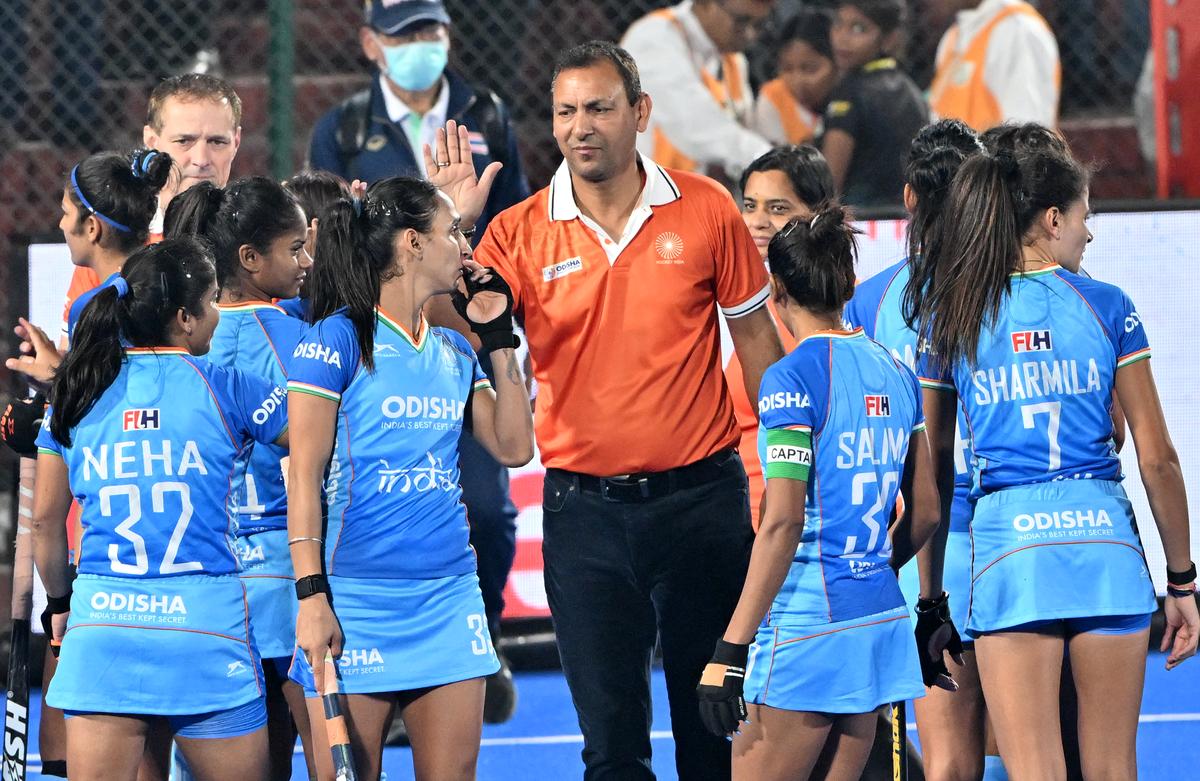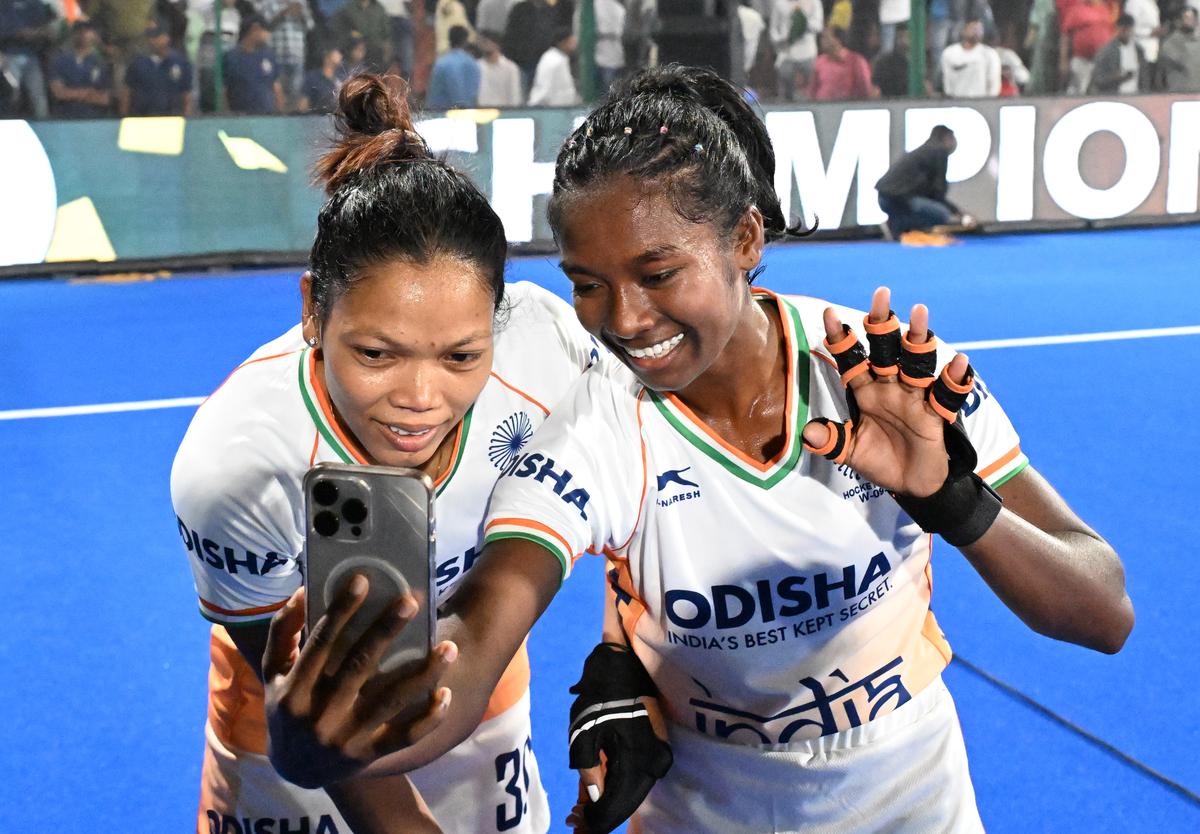Even before the Asian Champions Trophy (ACT) was officially announced, it was evident that the Indian women’s hockey team would be markedly different from what it had been for some time. A new coach, new challenges, and significant baggage to shed meant the tournament — regardless of its position in the hierarchy of major international competitions — would be important as both a measure of recent developments and a precursor to future prospects.
India found itself in the unique position of being the defending champion while dealing with a long string of losses, a restructured team composition, and a new management espousing a completely different philosophy and style of play compared to former coach Janneke Schopman. That the host managed to retain the title despite these challenges augurs well for the team. However, it didn’t come easy, and the road ahead will only get tougher for coach Harendra Singh and his squad.
By all accounts, the event in Rajgir served as an important foundation. Although Harendra took charge during the away leg of the FIH Pro League 2023-24, he had little opportunity to make an impact as the team struggled with poor form, uninspiring results, and low motivation. With the other eight teams in the competition already qualified for the Paris Olympics, the entire Pro League campaign held a very different meaning for them compared to India. The sole saving grace for India was the USA’s worse performance, which ensured India avoided finishing last and, by extension, relegation to the Nations Cup.
A new Olympic cycle and a fresh start for teams with their eyes on Los Angeles Olympics 2028 also allowed India to wipe the slate clean. Even though a look at the team compositions of other major sides — especially China and Japan, the two Asian teams which played in Paris — highlighted India’s status as favourites, with enough experience in its ranks, the shadow of eight consecutive losses loomed over the players.
“The makeup of the other team is neither our concern nor our problem. For us, it’s about our process and targets, and that’s what I have always emphasised. If you focus on your game, you can achieve results. If you get preoccupied with the opponent’s game — it’s important to plan and strategise, no doubt — you risk losing sight of yourself,” Harendra insisted throughout the tournament.
Although the team trained for a few weeks before the ACT kicked off, the uncertainty of performing in match situations after a five-month hiatus, coupled with reminders of past struggles, was evident early on. India’s first match of the tournament, played on the newly-laid turf at the brand-new and barely completed hockey venue at Rajgir Sports Complex, was tentative. It took a break and some encouraging words from the bench for the girls to regroup and secure a 4-0 win against a much lower-ranked Malaysia.
There was uncertainty inside the circle and a lack of cohesion and clarity overall. The players appeared hurried and, at times, unsure of their positioning and plans. “They needed to settle down, calm themselves, and avoid being rushed. Emotional control is something we are constantly working on,” Harendra admitted.

Well begun is half done: That India managed to retain the title despite all the challenges augurs well. But it didn’t come easy and the road ahead will only get tougher for coach Harendra Singh and his girls.
| Photo Credit:
R V Moorthy
Well begun is half done: That India managed to retain the title despite all the challenges augurs well. But it didn’t come easy and the road ahead will only get tougher for coach Harendra Singh and his girls.
| Photo Credit:
R V Moorthy
The team improved as the tournament progressed. There was a noticeable enhancement in fitness levels and a growing understanding among players and of game situations. By the time India faced China — the toughest competitor besides the host and the top-scoring team in the competition till then, including a 15-0 thrashing of Thailand — it appeared ready for the challenge.
The players rose to the occasion. With a revamped and inexperienced forward line in the absence of veteran Vandana Katariya, everyone had to adapt to new roles and responsibilities. With an average age of 21.5 years, it was perhaps one of the youngest Indian attacks in recent times. Sangita Kumari, Deepika, and Beauty Dung Dung, bolstered by the comeback of experienced Preeti Dubey and supported by Sharmila Devi and Lalremsiami, proved up to the task.
The midfield also held firm, with Sushila Chanu making a comeback and Neha Goyal — putting her wedding preparations on hold — serving as the heart of the team. The defence line was equally impressive, conceding just two goals through the league stage — off a penalty corner (PC) and a penalty stroke (PS), both to Korea. Even more impressive was the fact that the Indian defence of Udita, Jyoti and Ishika conceded just seven PCs through the competition!
“Our first priority is to keep a clean sheet and not concede goals, and I’m happy we managed that. Yes, scoring is important, but you must first protect your own goal before attacking the opposition’s. On that count, I’m satisfied with my girls,” Harendra said.
According to the players, the biggest shift has been in the combination of mental and physical fitness. “We dance, laugh, and have fun on the team bus, in the dressing room, and before the game. That helps create a positive environment, keeps us happy and fresh, and reflects on the field. It may not seem like much, but it plays a big role,” explained Salima Tete, shouldering the captaincy responsibilities at the age of 22. “Goal ki bhookh (hunger for goals)” is how Sangita describes the team’s mindset on the field. Improved physical fitness translates to sharper decision-making, sustained pressure on opponents, and quicker exploitation of errors.

Leading from the front: Salima Tete (L), at 22, spearheaded India’s unbeaten run throughout the tournament.
| Photo Credit:
R V Moorthy
Leading from the front: Salima Tete (L), at 22, spearheaded India’s unbeaten run throughout the tournament.
| Photo Credit:
R V Moorthy
However, there are areas of concern. India’s finishing remains a work in progress, with shots on target yielding fewer goals than expected. The semifinal against Japan was a massive wake-up call, with the inexperienced Japanese side forcing India to work hard for a narrow win. The team must realise that mistakes it got away with here will be punished by stronger opponents.
With the Hockey India League approaching, the Pro League will be the next opportunity for this squad to play together for India. Until then, there is much work to do if this group of players is to achieve the ambitious goal of a medal at the 2026 World Cup. The ACT, hopefully, has provided enough pointers in the right direction.






